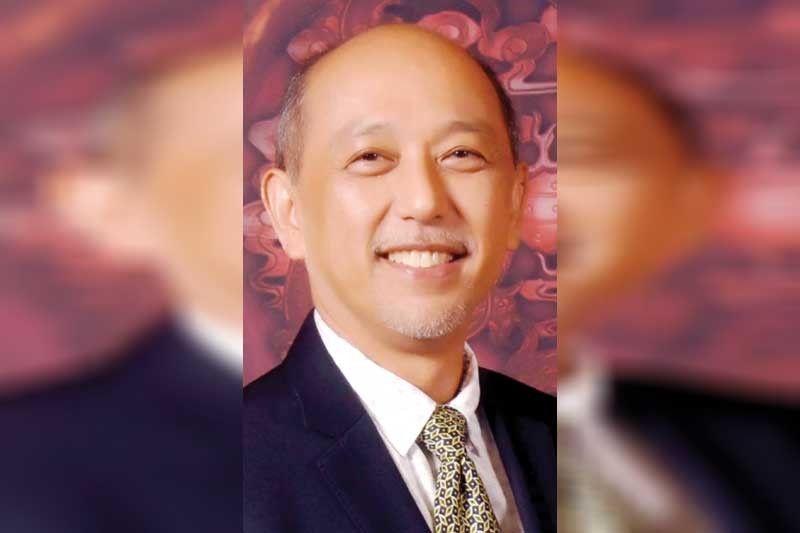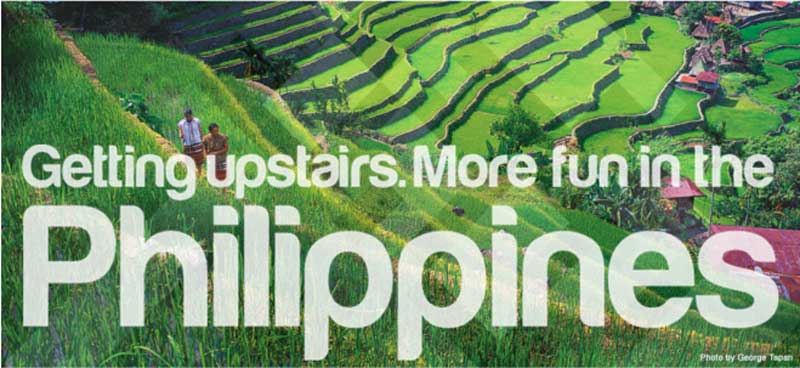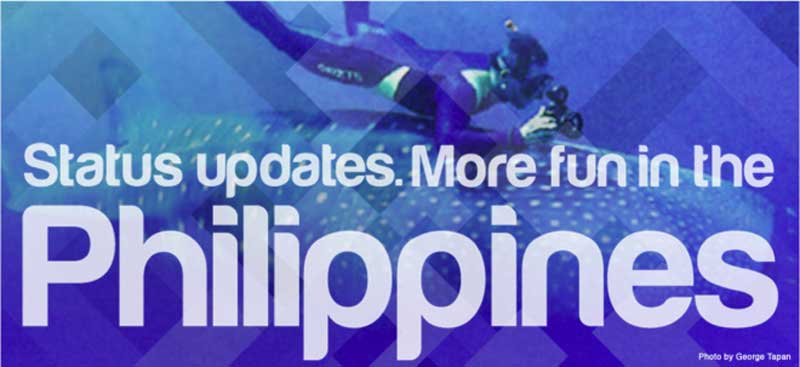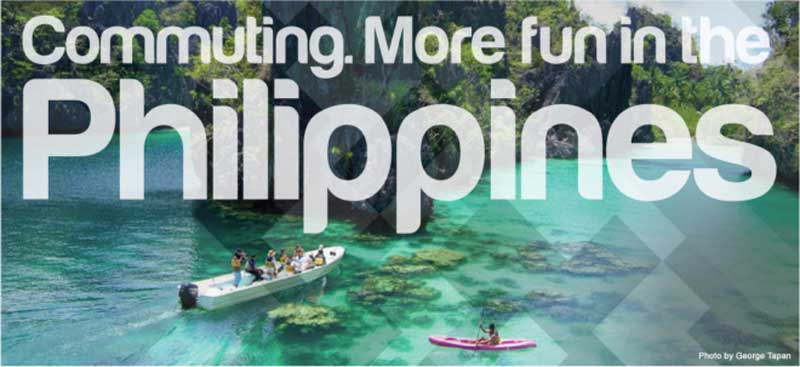The untold stories behind tourism’s most successful campaign

MANILA, Philippines — When I was asked to be a guest columnist for The Philippine STAR’s anniversary issue, and to specifically share my experiences with the “It’s More Fun in the Philippines” tourism campaign, I immediately said yes! After all, how often do I get the chance to talk about the role I played in what arguably is the most successful tourism marketing campaign in Philippine history? Not since I retired from government service three years ago have I been able to reminisce about the campaign that catapulted the Philippines into the worldwide tourism stage and captured the imagination of millions of Filipinos and foreigners alike.
I immediately set myself to the task of reviewing the old files that I’ve kept in dusty filing cabinets and external hard drives. A flood of memories came rushing back to mind as I sifted through the reports, starting in November 2011 when we (as a Special Bids and Awards Committee of the Department of Tourism and the Tourism Promotions Board) sequestered ourselves for two straight days and listened to eight of the country’s top advertising agencies pitch what they believed should be the country’s new tourism slogan.
It was a grueling two-day process, having to listen attentively, evaluate and compare eight different presentations. But by the end of the second day, just when we were about ready to hit the floor, came the very last presentation by BBDO Guerrero, and we heard for the very first time the forcefully persuasive line: It’s more fun in the Philippines.
Up until that time, the Philippines had been suffering from an image problem that discouraged many tourists from visiting. With low levels of awareness, foreigners knew very little about tourism in the Philippines, and conveniently bypassed us for other destinations. To make matters worse, our neighbors in the region had been for decades pouring out millions of dollars into advertising and public relations while we were not making any marketing investments whatsoever to compete for our fair share.

Untold Three of the original memes_posters created by BBDO Guerrero for the DOT with the new slogan “It’s More Fun in the Philippines,” launched in January 2012.
All throughout the conceptual stage, we knew resources would be scarce. To make up for this, we focused on the one thing we believed to be the country’s undeniable advantage, and that is its people. To begin with, there are over 100 million Filipinos, with 10 million of our population working overseas. They would make for powerful and positive ambassadors for the country. And then there’s the genuine warmth, welcome, good humor and sense of fun that have always been reported to make a visit to the Philippines so memorable. There is no denying the fact that we are among the most hospitable people on the planet, and a happy bunch to be around and work with.
But most importantly in this digital age is the media power of Filipinos. Considered by The Wall Street Journal as “the social networking capital of the world,” the Philippines had over 30 million Filipinos active on Facebook and was the 6th largest country represented on Twitter worldwide. Yahoo-Nielsen Net Index in 2011 reported that the Philippines was the world’s texting (SMS) capital, with an average sending rate of 600 text messages per month for every mobile user. Mobile penetration versus the total population was 90 percent, while Facebook penetration versus Filipino Internet users was 94 percent. Online photo sharing on Instagram was at 88 percent versus a global average of 68 percent.
Early on, the Filipino was identified as the campaign’s most powerful asset. If we could only excite the people with the right slogan, and activate their energies in social media, we felt we could get enough new visitors talking about, searching online for, and ultimately visiting our country. And we would not have to rely so much on expensive paid advertising in media.
We launched the campaign on a shoestring budget in the DOT Auditorium (not even in a fancy hotel), on Jan. 6, 2012, with only a peg for a video (we couldn’t afford the cost of an AVP at the time) and three old posters or memes to jumpstart the campaign. The event was eagerly awaited and covered by some of the most influential traditional and new media personalities, opinion leaders, bloggers and local personalities.
What the media witnessed and subsequently reported was a new tourism campaign that was so simple and playful that any ordinary bystander could easily make an ad himself. And that’s exactly what happened. Within hours, online memes started to appear in various social media platforms, as people picked up the theme and tone of the campaign, each wanting to show their version of why it’s more fun in the Philippines. What started out as a thousand-dollar launch event resulted in an explosion of free content that would have cost DOT/TPB millions to create and disseminate.

And the campaign spread like wildfire... worldwide! Two days after the launch, IMFITP was the #1 global trend on Twitter. More and more memes came pouring in from every corner of the globe, and people were just so thrilled to contribute to the new promotions effort. On the home front, surveys taken immediately after the launch showed high acceptability ratings among Filipinos, with research showing high marks for likeability (92 percent), believability (87 percent), empathy (86 percent), and uniqueness (82 percent).
Two weeks after the launch, the new campaign made its debut at the ASEAN Tourism Forum in Manado, Indonesia, earning high praise from the international tourism community. Not long after, DOT/TPB began its worldwide marketing blitz by showcasing the campaign in major tourism fairs and travel marts in Asia, Australia, Europe and North America.
Still grappling with limited budgets, however, the challenge now was for us to break into traditional media and to show one and all that the Philippines had truly come of age, and was determined to aggressively compete against the big tourism players of Southeast Asia and the world for its rightful share of the lucrative tourist market.
Opportunity knocked on our door as the Philippines hosted the Asian Development Bank Board of Governors Meeting in Manila in May 2012. Coverage of this prestigious event was already being planned with CNN, and DOT/TPB was put in charge of advertising content. What better opportunity, platform, channel and timing could there have been to come out globally with our latest TV commercial, conceived and produced on the strengths of the same people-powered and user-generated meme content? With funding support coming from the highest echelons of government, DOT/TPB ran ads in CNN for four months in 2012, and the world beheld the emergence of the Philippines in awe and admiration. To some, it seemed like a 30-second Powerpoint presentation, but the truth is, this meme-powered ad created so much positive impact with our global audiences.
All of a sudden, people started to take notice of the Philippines, and began inquiring about travel options. Over time and in all of calendar year 2012, the Philippines would achieve a 231 percent increase in Google hits, which translated to over 89 million search results for the Philippines versus 38 million in 2011. Searches for “fun Philippines” also increased by 255 percent versus 2011. The Philippines was the only country in Southeast Asia that achieved an increase in vacation-related searches (+7 percent), in contrast to searches for neighboring countries which showed negative or no growth. All this commotion did not escape the attention of our decision makers in Congress who, liking what they were seeing, approved an unprecedented 91 percent increase in DOT/TPB’s marketing budget for the following years.

The marketing campaign began to hit its stride by the start of year 2013, and we were implementing a well-conceived global marketing plan that involved tri-media advertising, digital and social media exposure, and OOH platforms that included billboards, subway trains, taxis and double decker buses, to name a few. Arrival numbers started to increase, tourist receipts reached unprecedented levels, and people realized the value of working in tourism. Secretary Mon Jimenez had earlier pronounced, “Tourism is the people’s business, and IMFITP is the people’s campaign,” and true to form, his vision was coming true.
Unfortunately, the effort had to be temporarily shut down in the face of a triple-whammy that hit the Philippines later that year (i.e., the Zamboanga Siege in September, the Bohol earthquake in October and super-typhoon Haiyan in November). A three-month hiatus from marketing activities had to be observed to sympathize with the affected communities, but behind the scenes, the team ironed out tactical derivatives to refresh the IMFITP line without veering away from its original core values.
In February 2014, we launched a month-long multi-lingual worldwide campaign called “The Philippines Thanks You” to express gratitude to all who supported and aided the nation in its hour of need. Shortly after, various destination campaigns came pouring out on print, TV and digital, promoting the different islands and locations found in the country. As the avalanche of positive content became commonplace in international media, so did accolades and awards. One such award, coming from the World Advertising Research Center (WARC), ranked the IMFITP campaign as the best in Asia in 2014, and third worldwide.
DOT/TPB then launched “Visit the Philippines Year 2015,” to highlight a fun-filled calendar of events. This was followed the year after with another tactical campaign “Visit the Philippines Again 2016” to emphasize that one visit was not enough for a tourist to enjoy the many products and services on offer. In cooperation with the private sector, the Philippines blazed the trail and reaped unprecedented benefits for country and industry. Many more have adopted the tourism line in their own advertising efforts, brochures, billboards, mascots, and even on the side of their aircraft! Filipino communities here and abroad bannered the slogan in fiestas, festivals, reunions, conventions, exhibition and social events, showing all how proud they are to be from the Philippines.
By mid-2016, I said goodbye to government service. Looking back, I am totally grateful to have been a part of the “fun team” assembled under Secretary Mon Jimenez, who shared so much of himself and his expertise to us all. I am hopeful that the momentum we generated will be used as a springboard by future generations of leaders to take us to the next level. - Chicoy Enerio
* * *
(Domingo Ramon “Chicoy” Enerio is a 36-year marketing veteran of the DOT, and was assigned to various foreign posts in Tokyo, Frankfurt, Paris and London. Prior to his retirement in August 2016, he held the position of COO of the Philippines Tourism Promotions Board.)



















